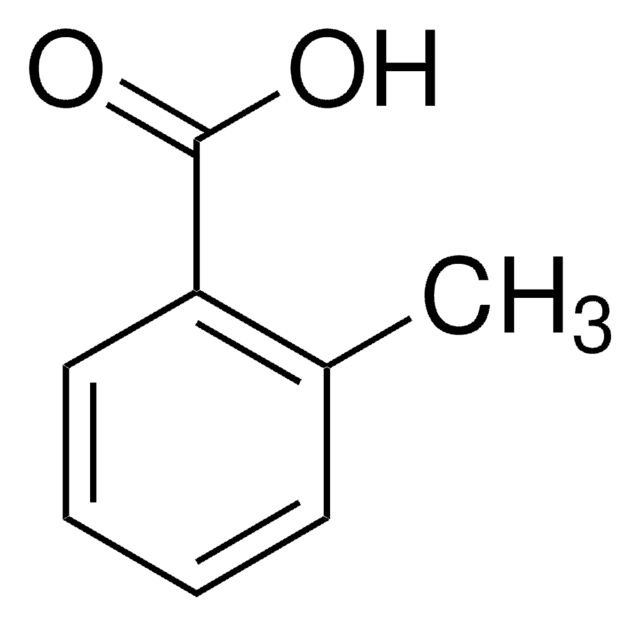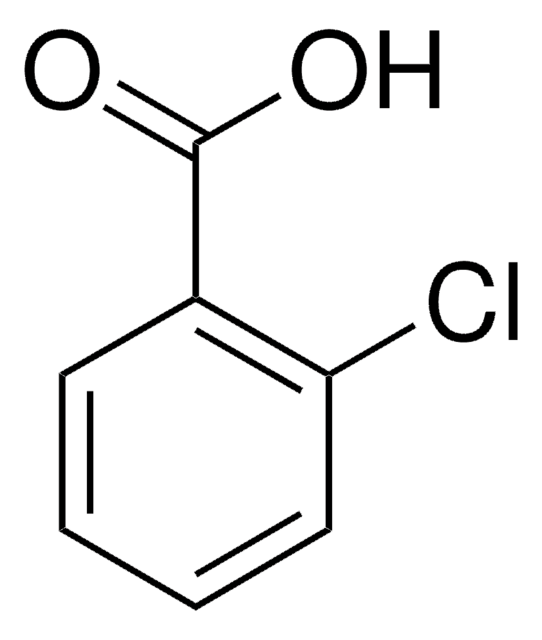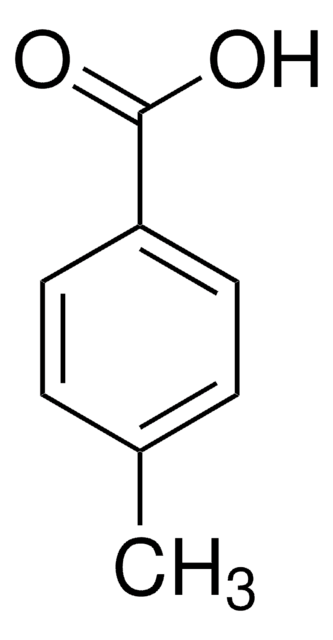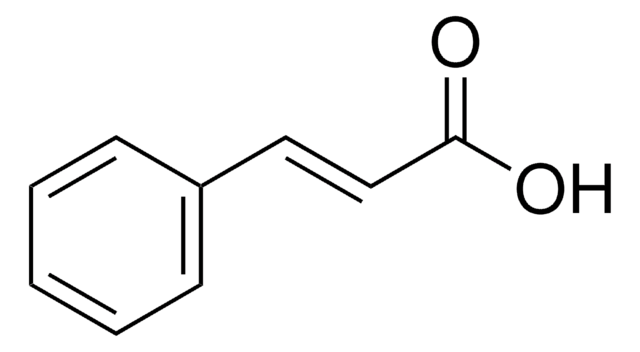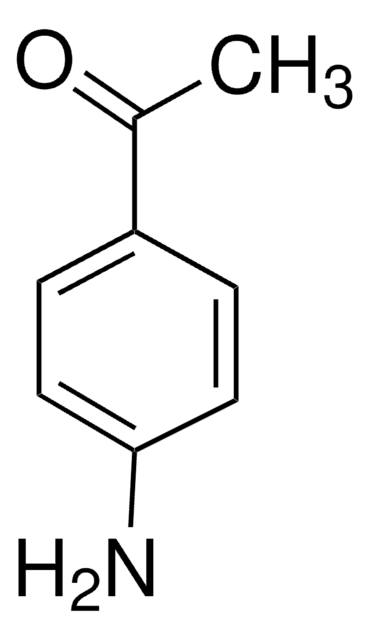T36609
m-Toluic acid
ReagentPlus®, 99%
Sinonimo/i:
3-Methylbenzoic acid
Autenticatiper visualizzare i prezzi riservati alla tua organizzazione & contrattuali
About This Item
Formula condensata:
CH3C6H4CO2H
Numero CAS:
Peso molecolare:
136.15
Beilstein:
970526
Numero CE:
Numero MDL:
Codice UNSPSC:
12352100
ID PubChem:
NACRES:
NA.22
Prodotti consigliati
Livello qualitativo
Nome Commerciale
ReagentPlus®
Saggio
99%
P. ebollizione
263 °C (lit.)
Punto di fusione
107-113 °C (lit.)
Densità
1.054 g/mL at 25 °C (lit.)
Stringa SMILE
Cc1cccc(c1)C(O)=O
InChI
1S/C8H8O2/c1-6-3-2-4-7(5-6)8(9)10/h2-5H,1H3,(H,9,10)
GPSDUZXPYCFOSQ-UHFFFAOYSA-N
Cerchi prodotti simili? Visita Guida al confronto tra prodotti
Note legali
ReagentPlus is a registered trademark of Merck KGaA, Darmstadt, Germany
Avvertenze
Warning
Indicazioni di pericolo
Consigli di prudenza
Classi di pericolo
Eye Irrit. 2
Codice della classe di stoccaggio
11 - Combustible Solids
Classe di pericolosità dell'acqua (WGK)
WGK 3
Punto d’infiammabilità (°F)
302.0 °F
Punto d’infiammabilità (°C)
150 °C
Dispositivi di protezione individuale
dust mask type N95 (US), Eyeshields, Gloves
Scegli una delle versioni più recenti:
Possiedi già questo prodotto?
I documenti relativi ai prodotti acquistati recentemente sono disponibili nell’Archivio dei documenti.
I clienti hanno visto anche
Jun Yao et al.
Applied and environmental microbiology, 73(8), 2735-2743 (2007-02-27)
Mobile group II introns ("targetrons") can be programmed for insertion into virtually any desired DNA target with high frequency and specificity. Here, we show that targetrons expressed via an m-toluic acid-inducible promoter from a broad-host-range vector containing an RK2 minireplicon
Rafael Silva-Rocha et al.
Molecular bioSystems, 8(7), 1950-1957 (2012-05-17)
In this report, we experimentally demonstrate that improving the cis-regulatory region of a target promoter can significantly enhance the response to an otherwise poor inducer. The transcriptional factor (TF) BenR of Pseudomonas putida KT2440 is a member of the AraC/XylS
G M Stephens et al.
Journal of general microbiology, 133(7), 1891-1899 (1987-07-01)
The effect of various lipophilic weak acids on the stability of certain TOL plasmids was investigated. Benzoate induced deletion of TOL plasmid DNA in Pseudomonas putida MT15, followed by loss of the plasmid; this effect was pH- and concentration-dependent, suggesting
R J Kolenc et al.
Applied and environmental microbiology, 54(3), 638-641 (1988-03-01)
A psychrotrophic bacterium, originally isolated from a natural aquatic environment, was characterized and identified as Pseudomonas putida Q5 for use as a representative recipient for biodegradative genes from a mesophilic microorganism. The TOL plasmid pWWO of the mesophile P. putida
Minna M Jussila et al.
Environmental pollution (Barking, Essex : 1987), 139(2), 244-257 (2005-08-02)
A collection of 50 indigenous meta-toluate tolerating bacteria isolated from oil-contaminated rhizosphere of Galega orientalis on selective medium was characterized and identified by classical and molecular methods. 16S rDNA partial sequencing showed the presence of five major lineages of the
Il team dei nostri ricercatori vanta grande esperienza in tutte le aree della ricerca quali Life Science, scienza dei materiali, sintesi chimica, cromatografia, discipline analitiche, ecc..
Contatta l'Assistenza Tecnica.